6 strange facts about Proxima Centauri b - 'Second Earth' you may not know
Astronomers discovered a " strange " planet orbiting Proxima Centauri - the star closest to Earth. This planet, called Proxima b, is slightly larger than Earth. It revolves around the habitable area of stars, which means that water can exist in liquid form - even people can live.
Proxima Centauri b
 Credit: ESO / M.Kornmesser
Credit: ESO / M.Kornmesser
Although this " Second Earth " has similar characteristics to Earth - where we live, Proxima b is still a " mysterious " and " alien " world. Read the information below to know the " strange " facts about this newly found planet.
1. Is it a " strange " star system?
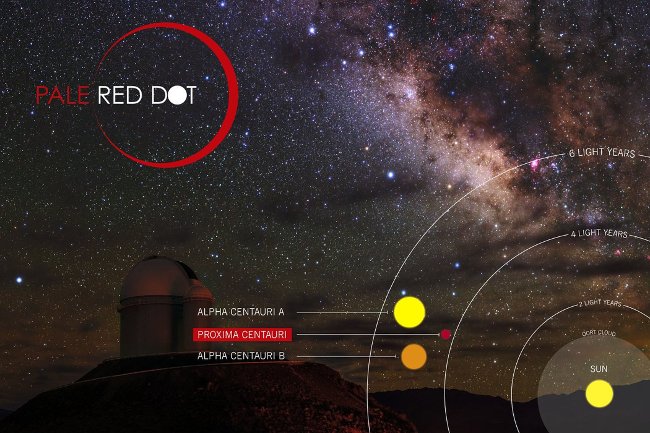 Credit: ESO / Pale Red Dot
Credit: ESO / Pale Red Dot
Proxima b 's master star is Proxima Centauri - part of the trio of strange stars that scientists are still studying. The other two stars are binary stars - that is, they revolve around a focus and collectively known as Alpha Centauri . Unsure scientists Proxima Centauri has an attractive limit to other star pairs in some trajectory or otherwise just move across them. If it is limited, it will take about 500,000 years to spin around Alpha Centauri, or it will take millions of years to leave that area.
2. Close but hard to see
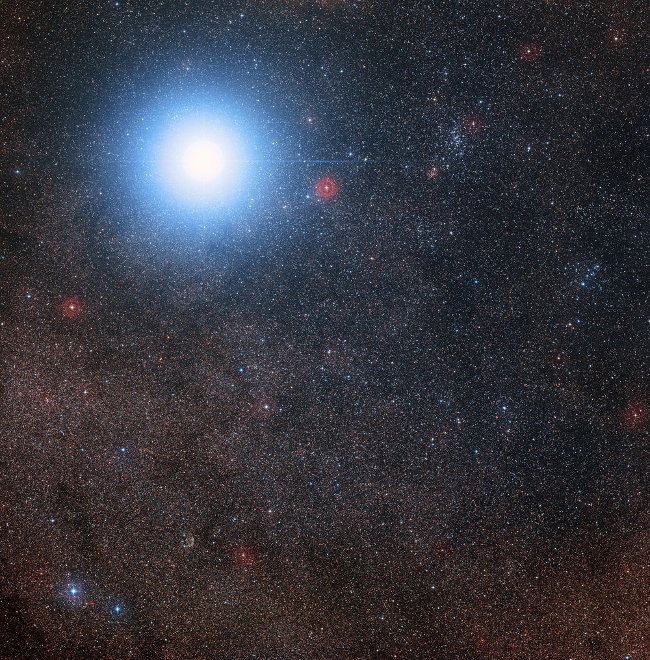 Credit: Digitized Sky Survey 2;Acknowledgment: Davide De Martin / Mahdi Zamani
Credit: Digitized Sky Survey 2;Acknowledgment: Davide De Martin / Mahdi Zamani
Alpha Centauri is observable without telescopes - two binary stars combine to form the brightest third star in the sky. Although Proxima is closer to Earth than the two Alpha Centauri binary stars - 4.22 light years compared to 4.37 light years, it is still much smaller and dimmer than the other two stars. That's because Proxima is a red dwarf and Proxima Centauri is too dim to be seen with the naked eye.
3. Observation angle
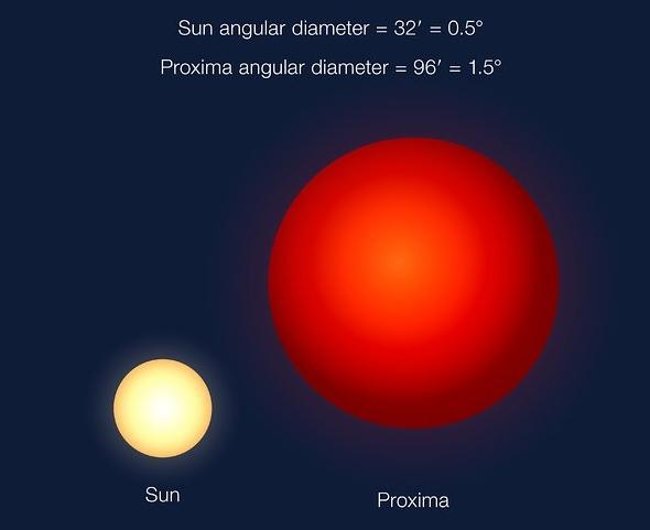 Credit: ESO / G.Coleman
Credit: ESO / G.Coleman
Proxima Centauri is a small star, it is only a tenth larger than the size of the Sun. If you look from Proxima b , this small dwarf will be 3 times larger than when viewed from the Earth on the Sun. That's because Proxima 's trajectory is really, really small. The planet orbiting the host star has a distance of 7.5 million km - only 5% of the distance between the Earth and the Sun ( about 150 million km ). Meanwhile, our Sun is a huge shining star in the sky of Proxima b , everyone in the world needs to prepare special devices to be able to see Proxima Centauri .
4. Areas that can live (small)
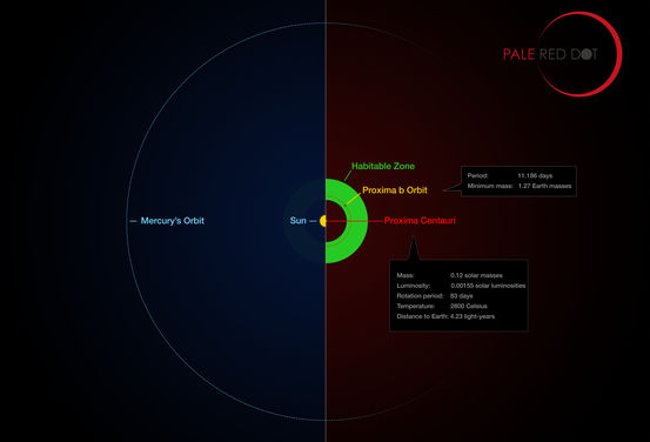 Credit: ESO / M.Kornmesser / G.Coleman
Credit: ESO / M.Kornmesser / G.Coleman
Proxima b exists in the middle of the habitable region of stars, in theory it is where water can exist in liquid form on the planet. Compared to our Sun, Proxima Centauri 's habitable area is very close to the host star. The range of stars is much colder than the Sun. Scientists once believed that red dwarf stars like Proxima could not exist in the habitable planets that it was spinning very close. But now, scientists think red dwarfs may be the best place to look for other planets that can survive.
5. Is it a " strange " planet?
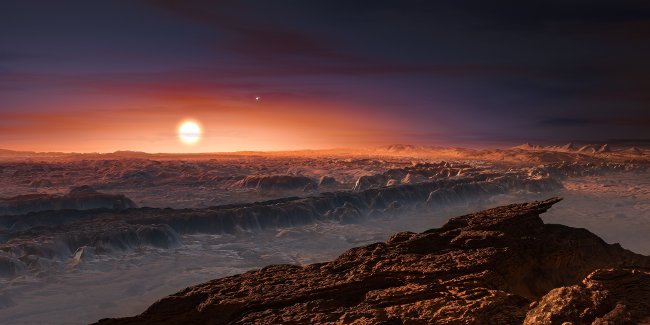 Credit: ESO / M.Kornmesser
Credit: ESO / M.Kornmesser
Astronomers believe that Proxima b is a " strange " planet - like the " Second Earth " that humans can live on. Its size is about 1.3 times larger than Earth - where we live. The small size makes astronomers liken it to a stone - the planet on the ground is similar to our Earth today. It is even located in the habitable area of Proxima Centauri where the temperature that makes water possible exists in liquid form. And it's the " Second Earth " - the closest " strange " planet we've found, just over 4 light-years away. But don't rush to calculate the time we can go there - or don't count. Even with the most modern science, it will still take thousands of years to reach this nearest star. Take that time to learn about Proxima b . Meanwhile, astronomers will continue to study the planet from afar. They will find out where its atmosphere comes from, evidence of water and alien life forms.
6. There is movement
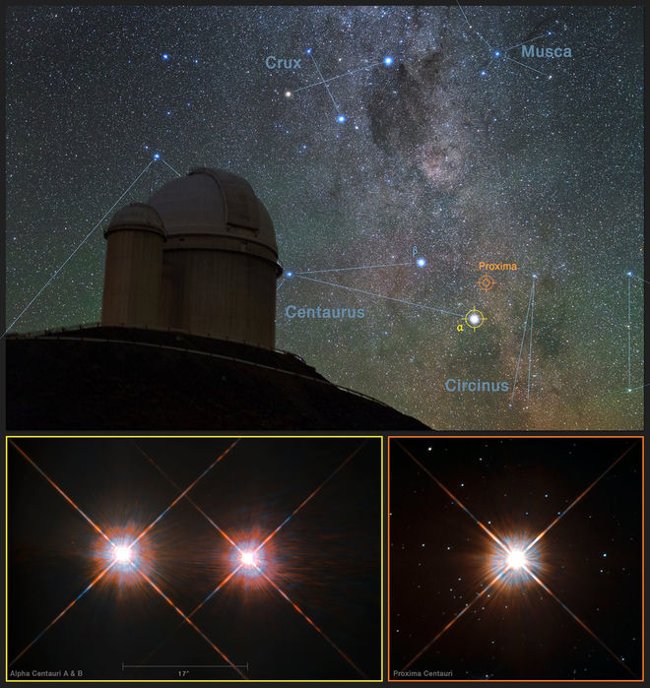 Credit: Y. Beletsky (LCO) / ESO / ESA / NASA / M.Zamani
Credit: Y. Beletsky (LCO) / ESO / ESA / NASA / M.Zamani
The Proxima Centauri star may be difficult to detect without using special equipment but the " strange " Proxima b is invisible, even using sky observation devices ( sky watching). ) modern. To explore the " strange " planet, astronomers have observed the star master replacing it. When a planet orbits a star, its gravitational pull causes the star to shift slightly. These gravitational pulls produce a Doppler effect or alter the length of the observed wavelengths in the light from the stars. In the Proxima Centauri study called " Doppler's shift ", astronomers used the telescope of the Southern European Observatory in Chile to discover that the star has a planet larger than its orbit. Earth about 7 million km.
You should read it
- 7 most modern astronaut ships on the planet
- The mystery of the numbers of Proxima b: The 'Second Earth' on the planet may exist life
- Is Proxima b our 'neighbor' planet?
- How much money does it take to get to Earth 2 and how long does it take?
- The discovery of the 'Second Earth' can exist only 4.2 light-years away from Earth
- Physicists calculate the number of years we need to travel interstellar, so large that you will sigh boredom
- Discovered mysterious signals emanating from a star right next to the Solar System, possibly of aliens
- Top 5 planets may be our 'new houses' in the future
May be interested
- Top 5 planets may be our 'new houses' in the future
 recently, scientists have discovered proxima b called the second earth may exist life. so, can people in the future settle in planets other than earth?
recently, scientists have discovered proxima b called the second earth may exist life. so, can people in the future settle in planets other than earth? - 40 interesting facts you didn't know about the Sun.
 after reading the interesting facts about the sun below, you will surely be surprised at our star as well as the ancient races. let's take a look at 40 interesting facts about the sun you may not know yet!
after reading the interesting facts about the sun below, you will surely be surprised at our star as well as the ancient races. let's take a look at 40 interesting facts about the sun you may not know yet! - Top 19 incredible facts not everyone knows
 do you know that the human foot is the right length of the forearm, the thumb is long with the nose and the lips are longer than the index finger? here are 19 amazing facts not everyone knows. invite you to consult!
do you know that the human foot is the right length of the forearm, the thumb is long with the nose and the lips are longer than the index finger? here are 19 amazing facts not everyone knows. invite you to consult! - Origin of Earth's name and other interesting facts
 below are unbelievable facts about earth, the rocky planet we call 'home' listed by the science and technology magazine popular mechanics (new york, usa) on the occasion of the 50th anniversary. the day the earth was born (april 22, 1970 - april 22, 2020), please follow along.
below are unbelievable facts about earth, the rocky planet we call 'home' listed by the science and technology magazine popular mechanics (new york, usa) on the occasion of the 50th anniversary. the day the earth was born (april 22, 1970 - april 22, 2020), please follow along. - 10 strange and unbelievable facts about animals you may not know
 cats can bark, dogs can dream, hens can become roosters ... do you believe these things are real? here are the strange and incredible facts about animals you may not know.
cats can bark, dogs can dream, hens can become roosters ... do you believe these things are real? here are the strange and incredible facts about animals you may not know. - 24 extremely interesting facts you may not know yet
 let's tipsmake.com find out 24 extremely interesting facts you may not know below!
let's tipsmake.com find out 24 extremely interesting facts you may not know below! - 12 strange and interesting facts about the universe: How many of you know?
 if you lived on venus, you would see the sun rise every 117 days on earth. that means the sun will only grow twice in venus' year. in addition, because venus rotates clockwise, the sun will rise in the west and set in the east.
if you lived on venus, you would see the sun rise every 117 days on earth. that means the sun will only grow twice in venus' year. in addition, because venus rotates clockwise, the sun will rise in the west and set in the east. - 10 mysterious and strange places appear Google Earth that surprised people
 the vast earth has a lot of mysterious lands that people do not know and have not yet arrived. now, thanks to the google earth tool, anyone can search for and discover strange and mysterious places on the planet.
the vast earth has a lot of mysterious lands that people do not know and have not yet arrived. now, thanks to the google earth tool, anyone can search for and discover strange and mysterious places on the planet. - 15 mysterious and strange places appearing on Google Earth surprise people
 the vast earth has many mysterious lands that humans do not know and have not yet set foot on. nowadays, thanks to the google earth tool, anyone can search and explore strange and mysterious places on this planet.
the vast earth has many mysterious lands that humans do not know and have not yet set foot on. nowadays, thanks to the google earth tool, anyone can search and explore strange and mysterious places on this planet. - It turns out 15 'facts' about the Earth and the universe that we still believe is completely wrong
 the sun is yellow, nothing faster than light, the moon has a dark side ... are the 'facts' that many people still believe and share over the years. but they are all inaccurate scientific information that has been rejected by science.
the sun is yellow, nothing faster than light, the moon has a dark side ... are the 'facts' that many people still believe and share over the years. but they are all inaccurate scientific information that has been rejected by science.










 Explaining the mysterious gravity loss phenomenon in some places in Canada?
Explaining the mysterious gravity loss phenomenon in some places in Canada? 9 types of human personality that managers, people and marketers need to know
9 types of human personality that managers, people and marketers need to know Why do Olympic swimmers wear two swim caps?
Why do Olympic swimmers wear two swim caps? Unexpected discovery of the city hosting the 2016 Olympics
Unexpected discovery of the city hosting the 2016 Olympics Exciting discovery about shooting at the 2016 Olympics
Exciting discovery about shooting at the 2016 Olympics 10 most impressive scientific discoveries in the world in the first 6 months of 2016
10 most impressive scientific discoveries in the world in the first 6 months of 2016